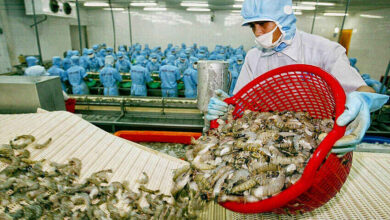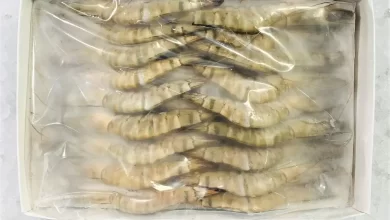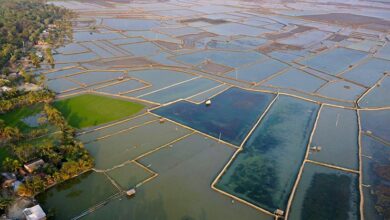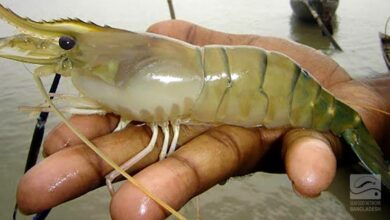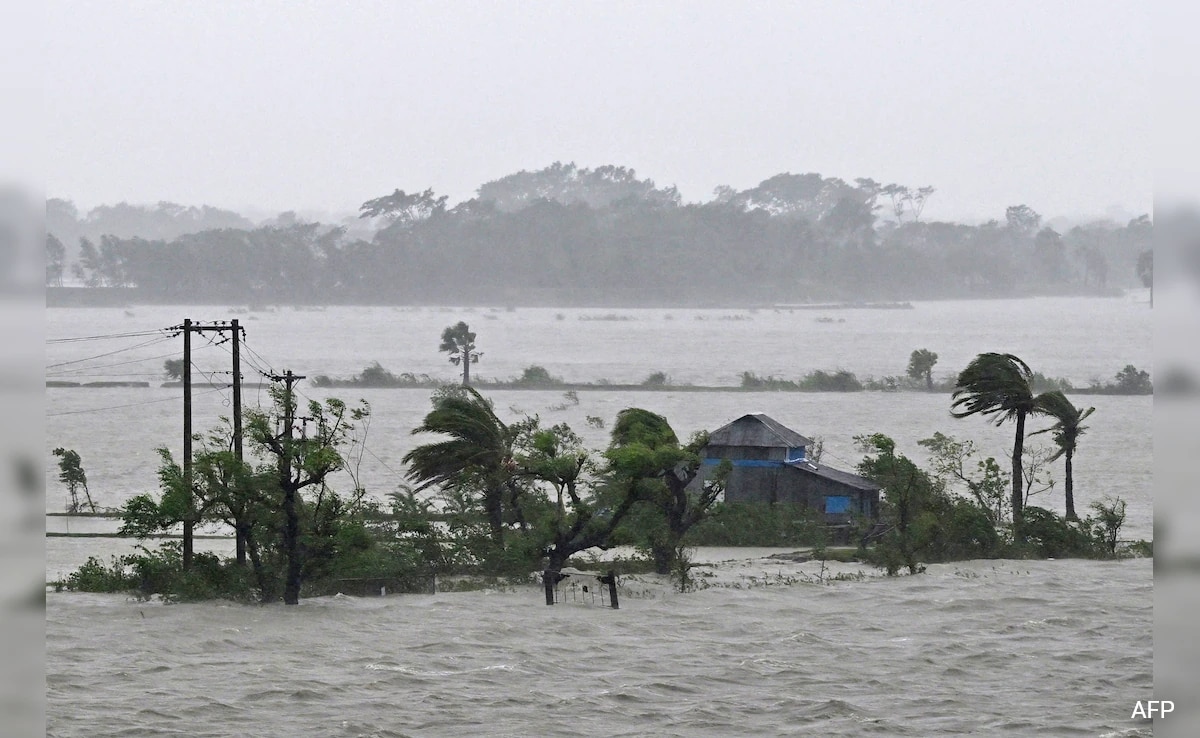
The adverse effects of climate change are posing significant challenges to shrimp farming in Khulna, as environmental changes are reducing the availability of wild broodstock in the region.
Growing risks from climate change
Shrimp farming, fish cultivation, and rice production in Bangladesh’s coastal areas are increasingly threatened by climate change-induced factors such as rising sea levels, extreme flooding, cyclones, soil erosion, and salinization.
Dr. Aksya Kumar Sarkar, a shrimp production and processing expert with 25 years of experience, highlighted the vulnerability of shrimp feeding, breeding, and nursery grounds in the region. Producers and exporters are becoming concerned about declining shrimp production, which is affecting exports due to climate-induced temperature fluctuations.
In the country’s southwest, shrimp farming remains largely dependent on wild post-larvae since hatchery production is still limited and market is flooded with low-quality smuggled nauplii. Hence, farmers prefer wild post-larvae for their higher survival rates and better quality.
Impact on shrimp farming
According to shrimp expert and former fisheries officer Dr. Aksya Kumar Sarkar explained that prawns are highly sensitive to salinity levels, requiring brackish water in their early life stages. Shrimp post-larvae depend on estuaries for shelter and food, making them vulnerable to environmental changes.
The key shrimp-farming districts of Khulna, Bagerhat, and Satkhira are facing severe impacts from floods, heavy rainfall, droughts, cyclones, and tidal surges. Many poor coastal residents who collect wild shrimp post-larvae near the Sundarbans are reporting declining catches due to increasing water temperature and salinity fluctuations caused by climate change.
Extreme weather events and rising sea levels could further alter the aquatic ecosystem, leading to a scarcity of wild post-larvae. Shrimp-farming communities are now dealing with a dual challenge: reduced post-larvae stocks and increased risks of coastal flooding and storm surges.
Economic and social consequences
According to Dr. Praful Kumar Sarkar, small-scale shrimp farmers and associated workers are often socially, economically, and politically marginalized. Limited access to essential services such as healthcare and education further exacerbates their struggles.
The declining availability of post-larvae has significantly impacted coastal villages reliant on shrimp farming. Climate change has led to the destruction of shrimp feeding, breeding, and nursery grounds in the Sundarbans, further intensifying the crisis.
As a major contributor to Bangladesh’s economy, shrimp farming is an essential sector, with most shrimp being exported to the EU nations, UK and USA. Any decline in shrimp production due to climate change could result in a substantial loss of foreign currency earnings. Additionally, lower production levels could impact hatchery operations, shrimp feed industries, and shrimp processing businesses.
Urgency for research and adaptation
Climate change presents a major challenge to the long-term sustainability of the shrimp sector. More research is needed to develop adaptive farming strategies, improve existing technology, and implement community-based climate resilience measures.
Increased salinity in inland groundwater has been observed in recent years, causing soil degradation and reducing soil fertility. This, in turn, affects rice and freshwater fish production and limits biodiversity.
Dr. Mostafa Sarwar, a climate expert and professor at Khulna University of Science and Technology, stressed the need for improved adaptation measures. Integrated coastal management, reforestation, and climate resilience programs could help mitigate economic losses and protect the shrimp industry from further damage.
Rising water temperatures and shrimp farming challenges
There is a noticeable difference in heat tolerance between mature shrimp and their post-larvae. Farmers typically release post-larvae into shrimp enclosures in January-February when water temperatures remain around 25°C. However, as temperatures rise to 27°C in March, many shrimp fail to survive, leading to increased mortality rates. Warmer waters are also contributing to the spread of viral infections, further threatening shrimp production.
Salinity issues and water scarcity
According to Golam Kibria Ripon, General Secretary of the Shrimp Fry Trading Association, salinity in Khulna’s rivers has become a significant challenge for shrimp farmers. Normally, river water in the region turns saline in January, but in recent years, this transition has been delayed until February. Additionally, salinity levels, which previously ranged between 16-18 ppt in May-June, have now dropped to 8-10 ppt, negatively affecting shrimp growth.
A shrimp farmer from Daulatpur, Khulna, reported that water scarcity is a growing concern for shrimp production. Additionally, frequent virus outbreaks are further reducing yields, making it increasingly difficult for farmers to sustain their livelihoods.
As climate change continues to threaten shrimp farming in Bangladesh, urgent measures are needed to adapt to these challenges. Research, policy interventions, and sustainable farming practices must be prioritized to protect both the environment and the livelihoods of coastal communities.

